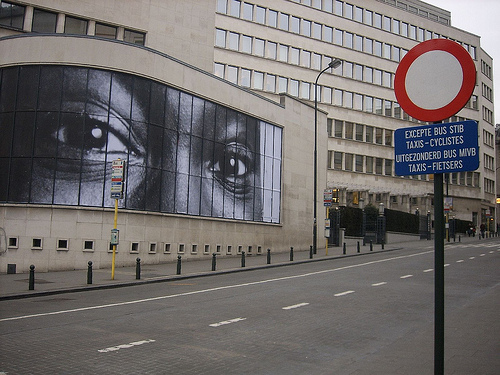Here are some interesting stories about art that I’ve come across recently– an endlessly fascinating topic for me.
When does a work of art stop being itself? When does it stop being by the artist who originally created it? These are questions I would expect to ponder in a conceptual art exhibition, not while reading the news. I’ve seen work appropriated by other artists to create a new piece, but here’s a case of an artist, Anthony Caro, who says his piece Lagoon, a steel sculpture, is no longer the one he made and therefore no longer by him. Why? A gallery added metal feet to its base during an installation. As a result, Caro has disowned it.
This is a very cool idea that can be used in many places where art is endangered. The Modern Art Iraq Archive (MAIA) collects and stores images of works of art, along with publications, catalogues and other commentary. “MAIA’s goals are to raise awareness of the diverse body of modern works of Iraqi art, to help locate their current whereabouts, and to assist agencies working to prevent their illegal movement and sale. MAIA aims to reach a wide and participatory audience across the globe, and offers users the ability to document, discuss, explore, and enrich Iraqi artistic expressions and experiences.” Anyone can upload an image or add a comment or story about the works in the archive.

I love this column from New York Magazine art critic Jerry Saltz about his marathon viewing sessions with some of his favorite art. Lordy, the man has staying power. I’m suffering from major art envy. A few of his selections have long been on my art pilgrimage destination list, like the Scrovegni Chapel in Padua and the Basilica di San Vitale in Ravenna, but all of them are places I’d love to linger in.
This is kind of funny. A Danish artist posted an image of Gustave Courbet’s The Origin of the World, which is quite graphic but also beautiful, only to have his account disabled because the image violated Facebook’s decency standards. Yes, yes, slippery slope and all that, I suppose you could say. Are all nipples and bums prohibited? What if they belong to a 500 year old painting or 2100 year old sculpture? Can galleries display work from exhibitions? Apparently some art depicting the naked figure is okay, but some, like Courbet’s portrait of nether regions, is not.
Last year Jamie Oliver received the TED prize ($100,000 and “one wish to change the world”) for his campaign to make school meals more nutritious. This year the prize went to JR, a Parisian photographer, for the Inside Out Project – “a large-scale participatory art project that transforms messages of personal identity into pieces of artistic work. Upload a portrait. Receive a poster. Paste it for the world to see.” JR is known for posting large black and white photographs in public settings, often illegally, all over the world. I’m probably too much of a law-abiding weenie to do this myself but I’d love to see the work of others, especially here in North Carolina. Let me know if you’re participating.


Maybe that artist should have put a more stable base on it so the museum wouldn’t have to add legs? Mmmm….
LikeLike
Ha ha, but that would be practical! 😉 Apparently, it had been shown before without the legs and with no harm, but maybe this museum’s lawyers were more risk-averse.
LikeLike